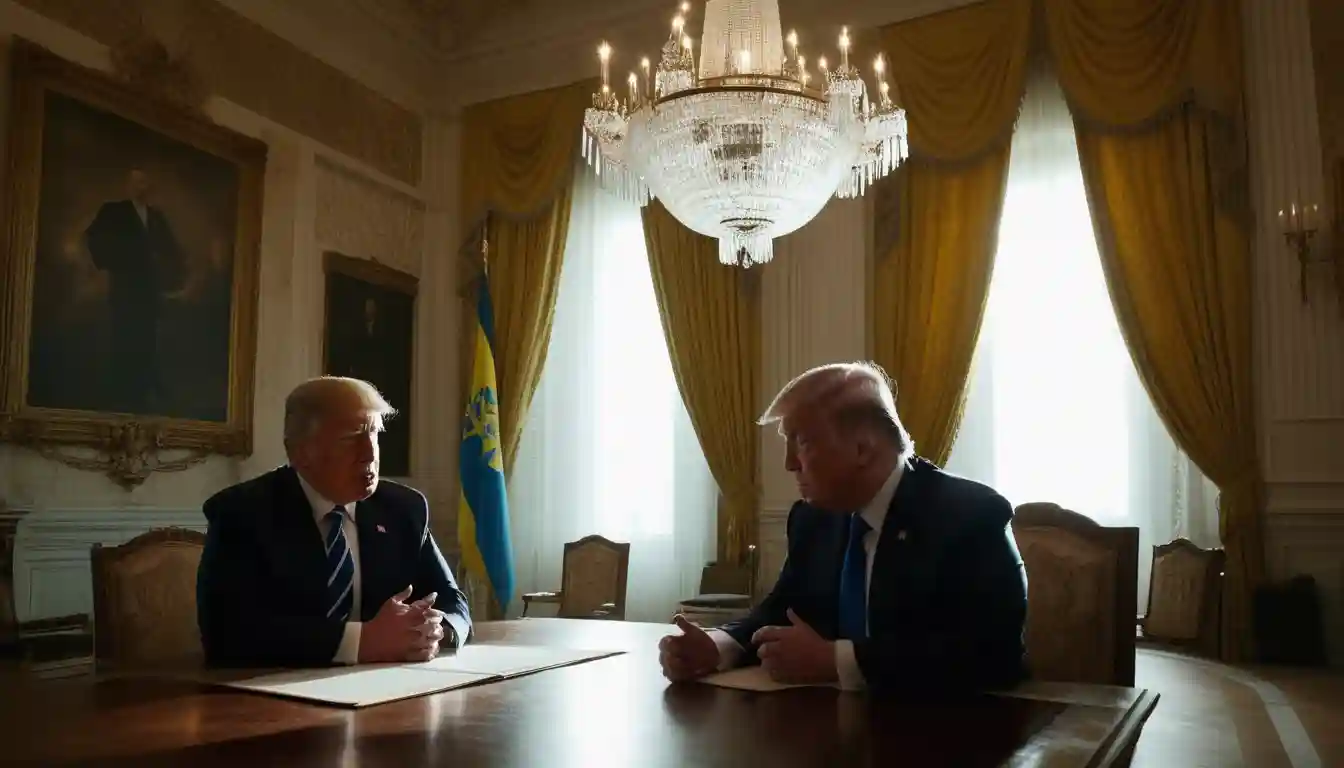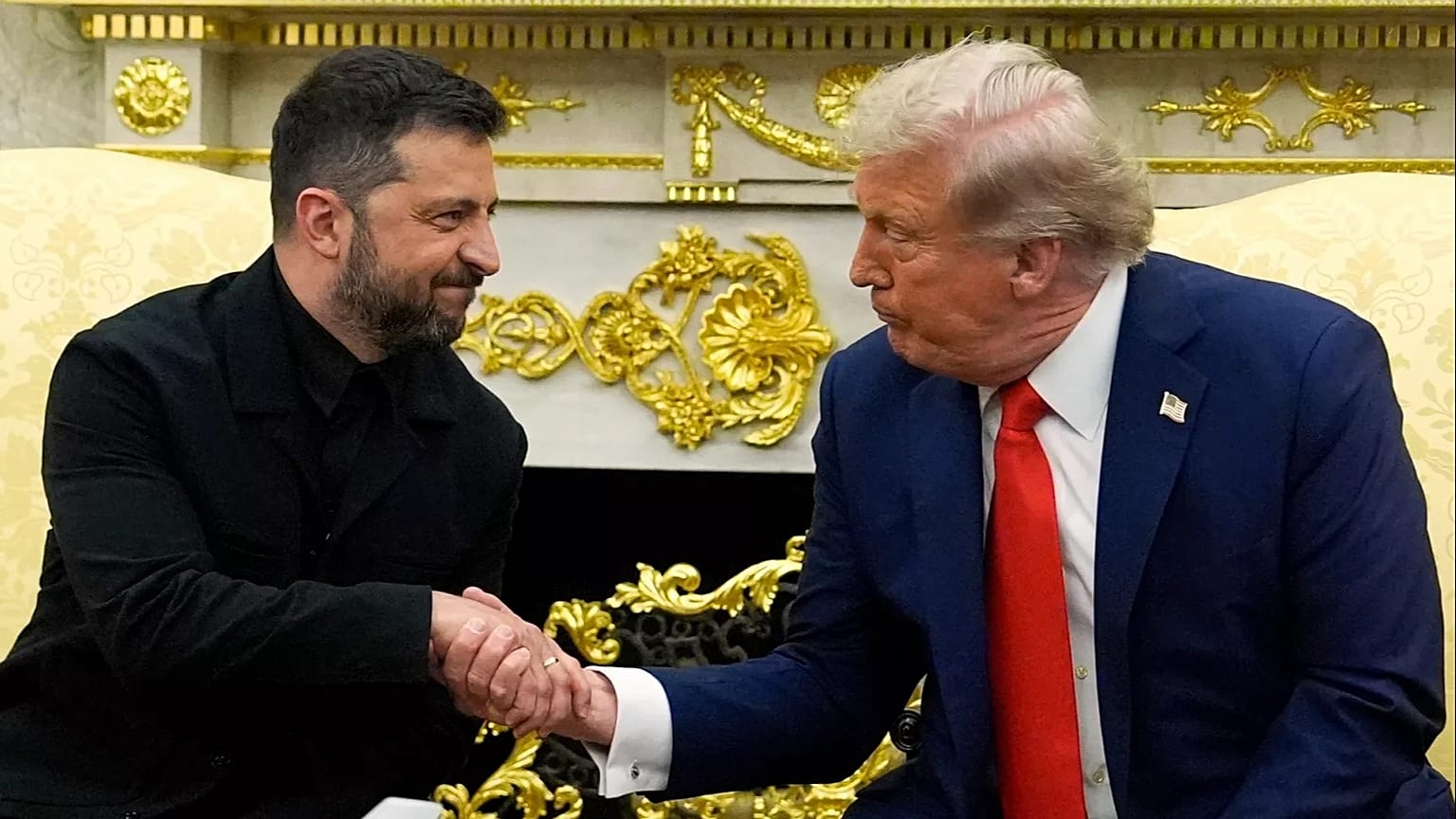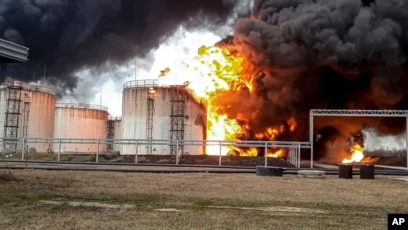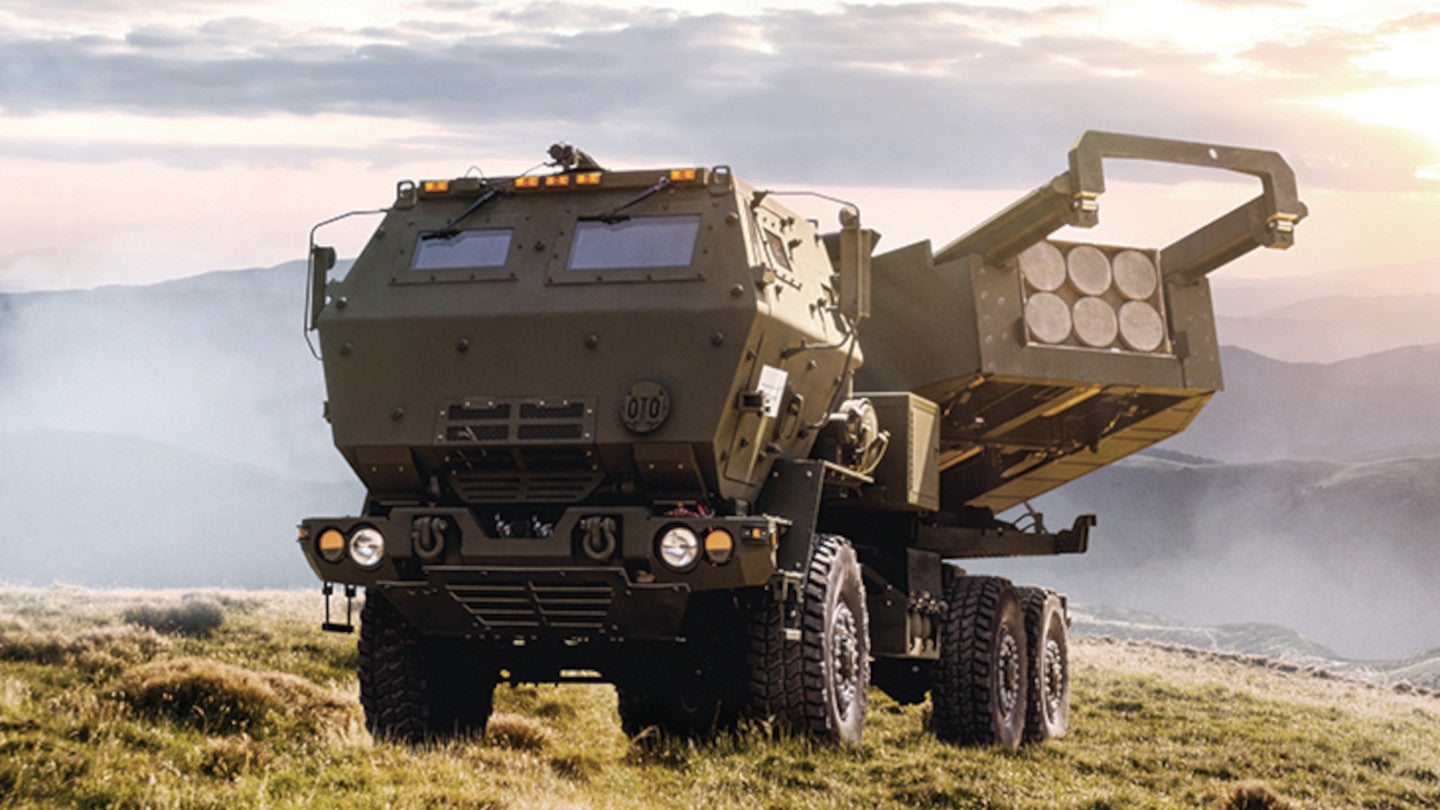
Trump Reverses Ukraine Strategy After Zelenskyy Meeting, Calls Russia Paper Tiger as Energy Markets React
Trump’s Ukraine Pivot Jolts Energy and Defense Markets
“Paper Tiger” jab at Moscow sparks major strategic and financial shifts
Donald Trump shook up global markets this week with a sudden about-face on Ukraine. After months of hinting at possible land-for-peace concessions, the president declared that Ukraine can “fight and win all of Ukraine back in its original form.” He also labeled Russia a “paper tiger,” pointing to mounting fuel shortages and a faltering economy.
The announcement came shortly after his meeting with Ukrainian President Volodymyr Zelenskyy during the UN General Assembly. He then doubled down on the message through a fiery Truth Social post. Within hours, energy prices rippled and defense stocks jumped, as investors scrambled to grasp what this new direction might mean.

From compromise talk to all-out backing
Trump’s turn marks his strongest public support yet for Ukraine’s territorial integrity. Just this summer, he had suggested Kyiv might need to make painful concessions. Now he’s backing full restoration. The timing isn’t random. Ukraine’s deep-strike attacks have battered Russian refineries, choking fuel supplies at home and leaving long lines at gas stations across the country.
As one energy analyst put it, “You can see the weakness now. Those gas lines are real, and they’re shifting the balance.”

Trump also hinted at channeling more European money through U.S. weapons makers. He referred—clumsily but clearly—to NATO’s new “PURL” fund, which pools allied cash to buy American arms. Roughly $2 billion is already pledged, with a $10 billion goal in sight.
Russia’s refinery woes open new doors
Drone strikes have forced chunks of Russia’s refining network offline, cutting diesel exports to the lowest levels in nearly five years. Meanwhile, Moscow’s central bank hiked rates to 17 percent to contain inflation while military spending swallows 7 percent of GDP.

| Year | Military Spending (% of GDP) |
|---|---|
| 2021 | 3.72% |
| 2022 | 4.06% |
| 2023 | 5.86% |
| 2024 | 7.1% |
| 2025 | 7.2% |
This turmoil is reshaping energy markets. European buyers are chasing replacement diesel from the Middle East, India, and the U.S. Gulf Coast. Tankers now travel longer routes, boosting freight rates and tightening ship supply.
“The pain is in refining, not crude,” one strategist explained. “That’s why product tankers and distillate refiners stand to gain while crude shippers lag behind.”
A windfall for defense contractors
The pivot also spells clearer growth for American defense giants. With Europe footing more of the bill, companies like Raytheon and Lockheed Martin—makers of Patriot interceptors and HIMARS systems—enjoy a more secure revenue stream.

Europe itself is racing ahead. NATO members have boosted artillery shell production sixfold since last year, aiming for 2 million shells annually. Firms like Rheinmetall, BAE, and Saab are locking in multi-year contracts.
Stock performance of major defense contractors like Lockheed Martin and Rheinmetall since the escalation of the conflict.
| Company | Date | Stock Price (USD/EUR) |
|---|---|---|
| Lockheed Martin | January 31, 2022 | $352.03 |
| Lockheed Martin | September 22, 2025 | $480.39 |
| Rheinmetall | February 25, 2022 | €101.20 |
| Rheinmetall | September 23, 2025 | €1,908.00 |
Politically, Trump’s “Europe pays, America supplies” formula neatly sidesteps domestic criticism of foreign aid while keeping transatlantic defense cooperation intact. Analysts already see it as a possible blueprint for future procurement deals.
Sanctions squeeze shipping
The EU’s latest sanctions package is tightening the screws further. By phasing out Russian LNG imports by 2027 and cracking down on “shadow fleet” tankers, regulators are raising the cost of moving Russian fuel.
The 'shadow fleet' is a clandestine network of oil tankers operating outside traditional regulations. These vessels are primarily used to transport oil from sanctioned countries, enabling them to evade international restrictions.
For compliant shippers, this is good news. Fewer gray-area vessels mean less competition and higher freight rates. “Every added layer of restriction makes legit operators more valuable,” said a shipping analyst.
What investors need to watch
This shake-up opens both risks and opportunities. Tanker operators focused on refined products look stronger than those hauling crude. European refiners with strong middle-distillate output may profit from high crack spreads, but they’ll still need to hedge against oil price swings. Defense players tied into NATO procurement likely fare better than those relying only on U.S. aid.
"Crack spreads" in oil refining represent the difference between the price of crude oil and the combined prices of the refined petroleum products made from it, such as gasoline and diesel. This crucial metric essentially serves as a refiner's gross profit margin, directly impacting their profitability; wider spreads generally indicate higher profits for refiners.
Still, don’t expect smooth sailing. Energy markets remain vulnerable to refinery strikes and sanction headlines. Natural gas prices in Europe are steady for now, thanks to strong storage, but a cold winter or faster sanctions could flip that picture quickly.
Rhetoric vs. reality
Trump’s “paper tiger” line makes headlines, but Russia isn’t crumbling. Pouring 7 percent of GDP into defense shows serious mobilization, not collapse. High interest rates are painful but also prove the central bank is fighting to steady the economy.
Sanctions only work if allies enforce them in lockstep. Past attempts to squeeze India and China into curbing Russian imports have mostly failed. As one geopolitical analyst put it, “The weak spot is refining. That’s where strikes hurt. But the bigger economy? That’s a harder beast to bring down.”
Looking ahead
Over the next year and a half, traders expect a few likely outcomes: NATO’s fund grows toward $5–7 billion, Europe tightens sanctions in fits and starts, and Ukraine keeps Russian refineries under pressure—taking half a million to a million barrels a day offline.
A sharper scenario could develop if the EU pushes LNG bans faster or cracks down harder on shadow fleet tankers, driving up European fuel prices and shipping rates. On the flip side, even a hint of a ceasefire could send crack spreads tumbling and tanker rates back to normal.
The key things to watch? NATO’s arms contracts, Europe’s ammunition output milestones, and Russia’s ability—or inability—to rebuild its refining base. For investors, it’s a tightrope act where timing matters as much as strategy.
House Investment Thesis
| Category | Summary of Key Points |
|---|---|
| Date & Context | Analysis dated 23 Sep 2025, following Trump's meeting with Zelenskyy at the UNGA. A rhetorical pivot supporting Ukraine's ability to win back all territory, calling Russia a "paper tiger," but no new US funding or sanctions. |
| Key Mechanism (PURL) | NATO's Prioritized Ukraine Requirements List (PURL) is the operational channel. European/Canadian funds are used to buy US-made weapons (e.g., Patriot interceptors, HIMARS munitions). ~$2B funded, ~$3.5B targeted by Oct, total goal ~$10B. |
| Macro Battlefield Lever | Ukrainian drone strikes have significantly damaged Russian refining capacity, leading to 5-year lows in diesel exports, domestic gasoline shortages/queues, and a 17% central bank rate, creating economic pressure. |
| Core Thesis | A messaging pivot, not a policy step-change. The investable edge is in refined products, product tankers, and specific defense supply chains (air defense, munitions). Russia is under pressure but not collapsing. |
| Root Causes of Pivot | 1. Alliance management at the UNGA. 2. The effectiveness of Ukrainian drone strikes as a low-cost lever. 3. A politically viable "Europe pays, US supplies" procurement model (PURL). |
| Market Implications: Energy/Shipping | Bullish for distillates (diesel/gasoil cracks) over crude due to refinery damage. Bullish for product tankers (MR/LR2) due to longer voyages. EU's 19th sanctions package (potential LNG ban by 2027) adds friction. |
| Market Implications: Defense | US Primes: Beneficiaries of PURL-driven orders for air defense (RTX) and precision munitions (LMT). EU Defense: Continued rearmament; EU artillery output up ~6x, supporting Rheinmetall, BAE, Saab, etc. |
| Pros (Investor Lens) | 1. Allied alignment without US budget drain. 2. Psychological operations amplify refinery strike impacts. 3. Focuses market attention on distillate tightness and tanker rates. |
| Cons (Investor Lens) | 1. Escalation risk from rhetoric. 2. Policy ambiguity; lack of new US sanctions places burden on Europe. |
| Sharp Comments | 1. PURL is geopolitics-as-industrial-policy, an export-credit scheme for US weapons. 2. The key market story is diesel tightness, not crude. 3. "Paper tiger" is overreach; Russia's stress point is refining/distribution, not military durability. |
| Scenarios & Probabilities | 1. Status Quo (Most Likely): Sustained pressure, elevated diesel cracks, strong tanker cycle. 2. Policy Bite: Tighter sanctions/earlier LNG ban, higher tanker rates/gas premia. 3. De-escalation: Normalization of energy/defense trades. |
| Trades/Catalysts to Watch | 1. Product Tankers: Russian export ban extensions, shadow fleet clampdowns. 2. US Defense: PURL contract awards. 3. EU Defense: Ammunition output milestones. 4. Gas (TTF): Sanctions headlines on LNG ban. |
| What Would Change the Thesis | 1. A hard US sanctions package on Russian oil logistics/tariffs on India/China. 2. Evidence of Russia quickly restoring refining capacity. |
| Bottom Line (Portfolio) | Optics now, procurement later. Tradable edges: 1. Long distillates / long product tankers. 2. Overweight US air-defense & EU ammunition makers. 3. Gas (TTF) optionality for winter headline risk. |
NOT INVESTMENT ADVICE